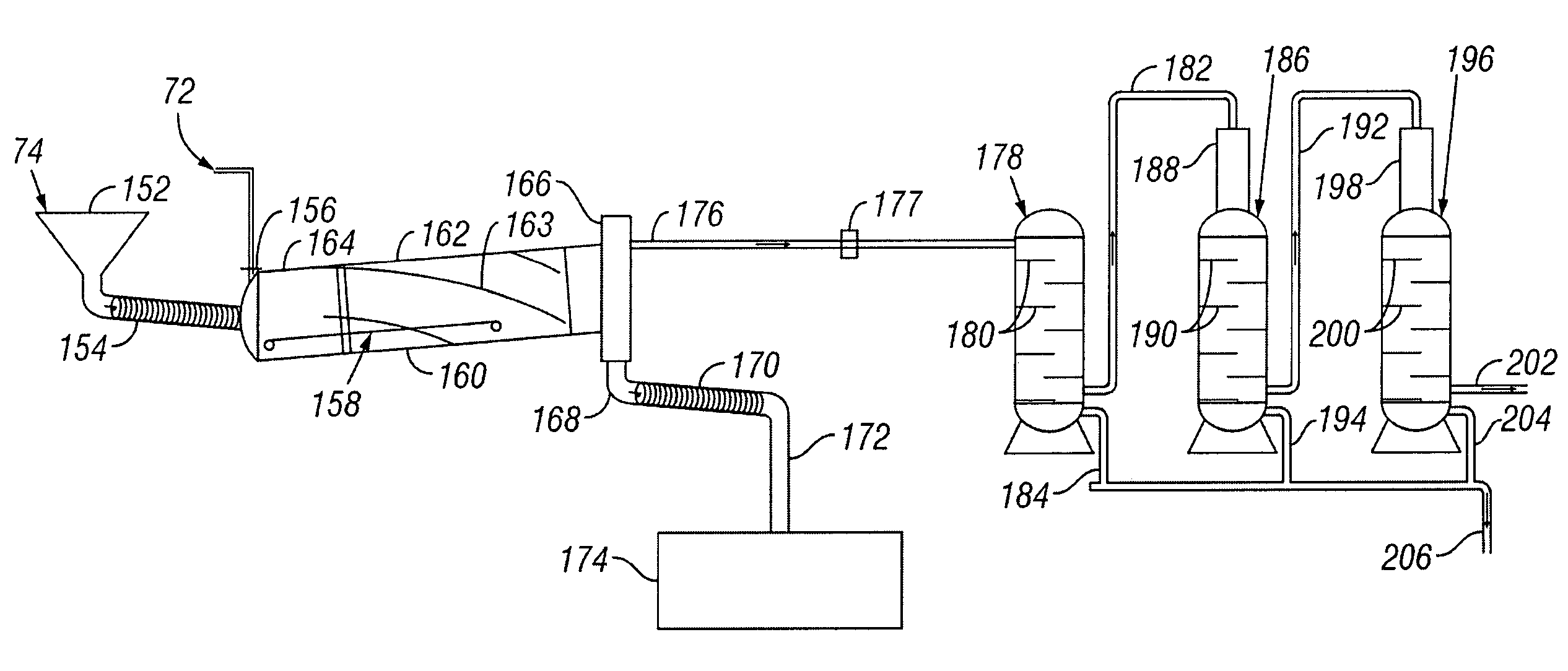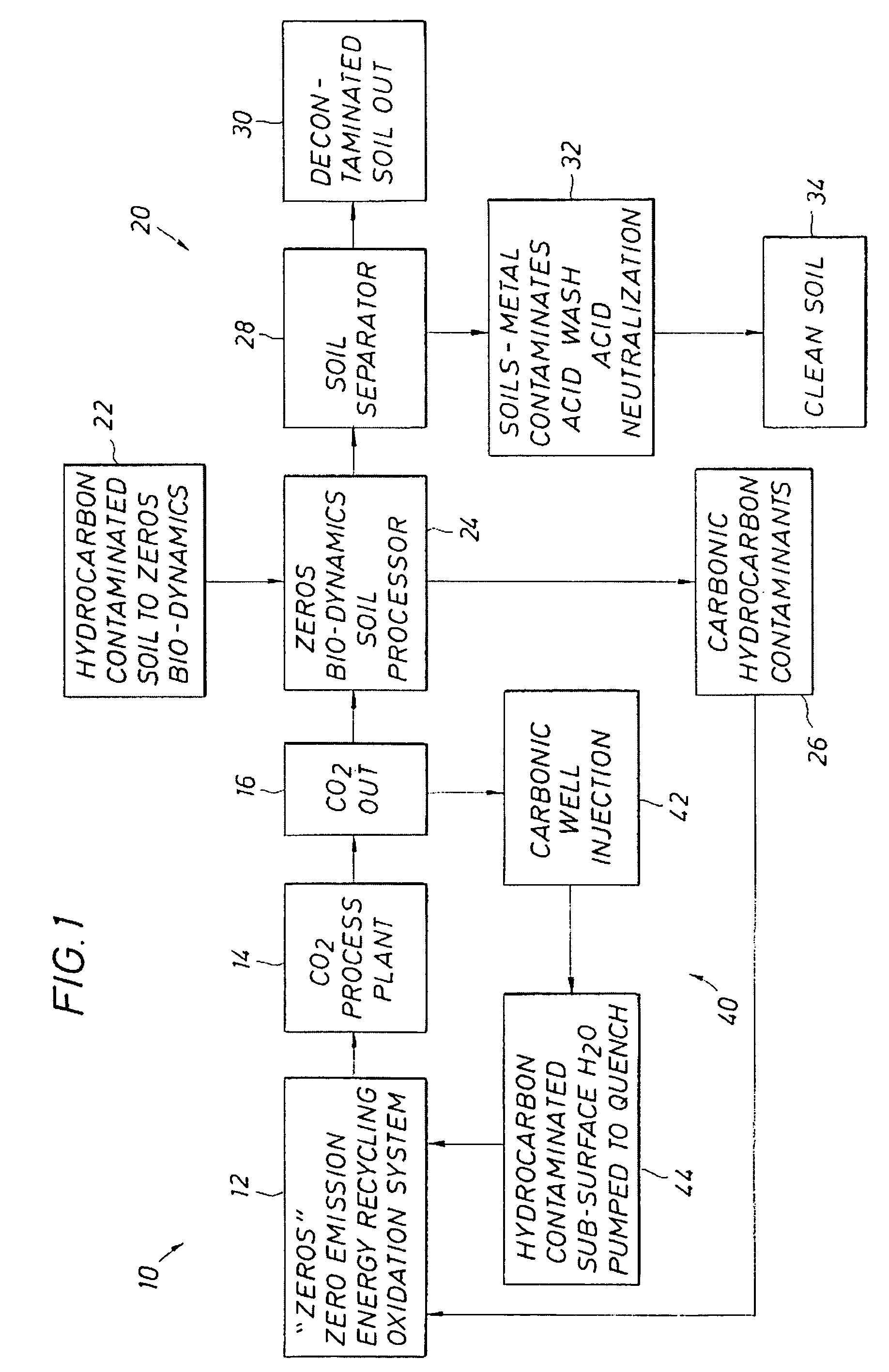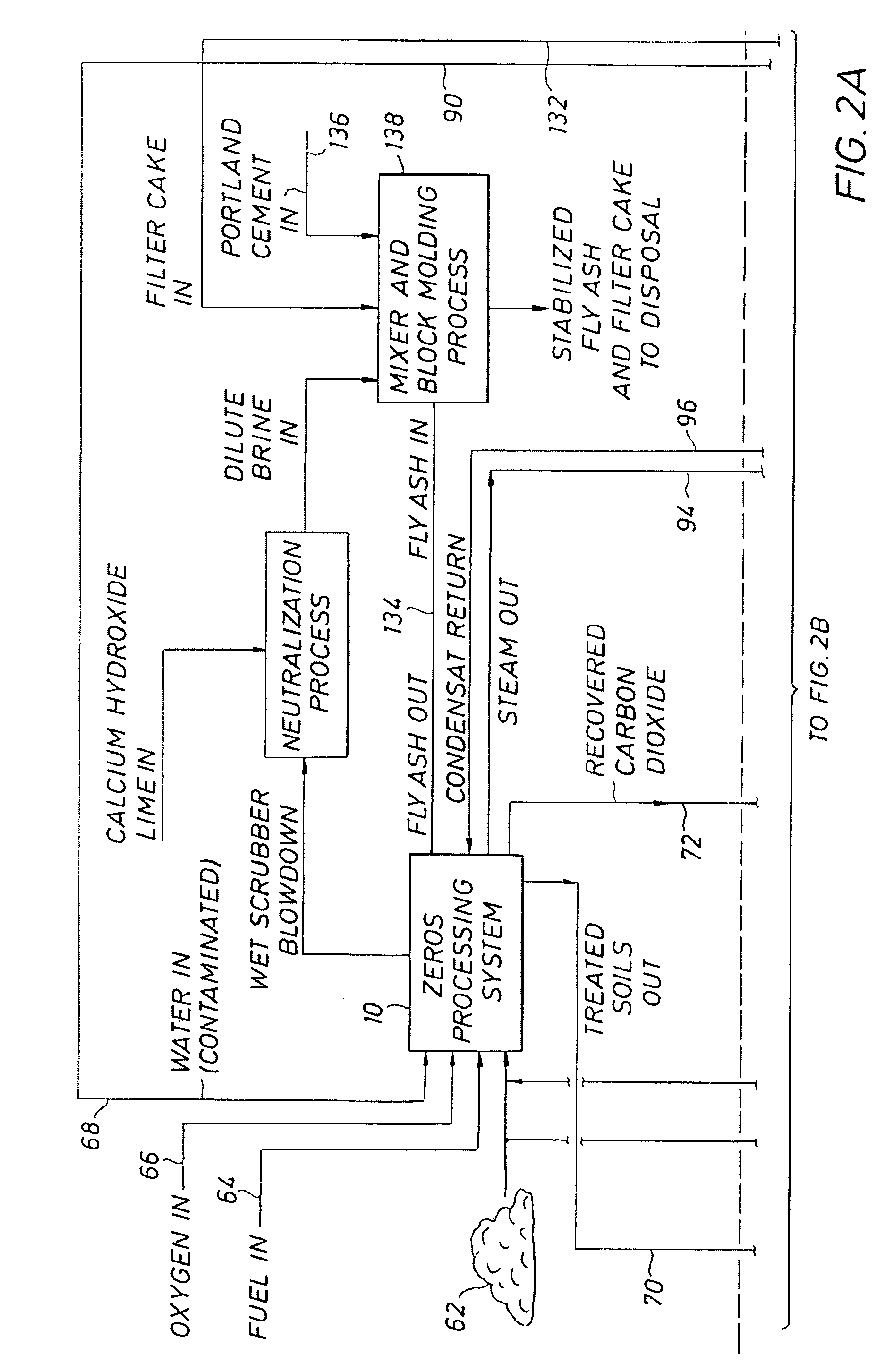Process for cleaning hydrocarbons from soils
a technology for cleaning hydrocarbons and soils, applied in the direction of cleaning using liquids, combustion types, lighting and heating apparatuses, etc., can solve the problems of oil and other hydrocarbon removal, unattractive solution, and very little material conten
- Summary
- Abstract
- Description
- Claims
- Application Information
AI Technical Summary
Benefits of technology
Problems solved by technology
Method used
Image
Examples
Embodiment Construction
[0021]As shown in FIG. 1, the process of the present invention combines a thermal process 10 that includes a combustion step 12 with carbon dioxide recovery 14, with a solvent process 20 for removing hydrocarbons from contaminated soils utilizing carbon dioxide from the thermal process 10 as a solvent. The thermal process 10 includes a combustion step 12 that utilizes oxygen rather than air for oxidation and which utilizes a recycle to increase the combustion efficiency. The carbon dioxide generated in the combustion step is recovered in a carbon dioxide processing step 14. The recovered carbon dioxide is then forwarded in a carbon dioxide distribution step 16 to the solvent process 20. Thermal process 10 is referred to in the figures generally as the ZEROS process. Solvent process 20 is referred to in the figures generally as Biodynamics.
[0022]The solvent process 20 begins with a step 22 of introducing contaminated soil or other waste material and carbon dioxide from the distributi...
PUM
| Property | Measurement | Unit |
|---|---|---|
| Angle | aaaaa | aaaaa |
| Angle | aaaaa | aaaaa |
| Mass | aaaaa | aaaaa |
Abstract
Description
Claims
Application Information
 Login to View More
Login to View More - R&D
- Intellectual Property
- Life Sciences
- Materials
- Tech Scout
- Unparalleled Data Quality
- Higher Quality Content
- 60% Fewer Hallucinations
Browse by: Latest US Patents, China's latest patents, Technical Efficacy Thesaurus, Application Domain, Technology Topic, Popular Technical Reports.
© 2025 PatSnap. All rights reserved.Legal|Privacy policy|Modern Slavery Act Transparency Statement|Sitemap|About US| Contact US: help@patsnap.com



